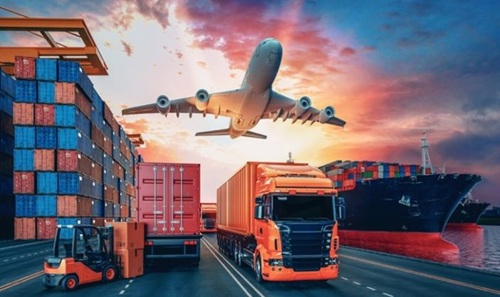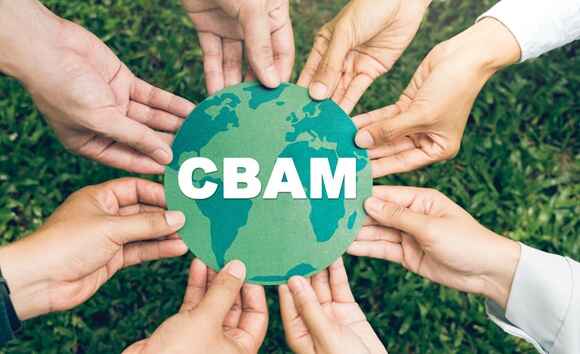The logistics industry in India is one of the most critical pillars of economic growth and trade competitiveness. By 2025, it has evolved into a USD 300+ billion ecosystem that connects manufacturers, traders, and consumers across an increasingly digital and interconnected landscape. With the government’s massive infrastructure push, adoption of digital logistics platforms, and a thriving e-commerce market, India’s logistics sector is undergoing a transformation. Yet, challenges like cost inefficiency, fragmented operations, and skill shortages remain hurdles to be overcome.
This article provides a 360-degree analysis of the logistics industry in India in 2025 — its current landscape, key drivers, opportunities, and the way forward.

Industry Overview
India’s logistics market was valued at around USD 250 billion in 2022, and according to NITI Aayog and Invest India projections, it is expected to reach USD 380 billion by FY 2025. The sector currently contributes about 13-14% of India’s GDP and employs over 22 million people directly and indirectly.
The logistics value chain includes transportation, warehousing, freight forwarding, inventory management, packaging, and value-added services. The industry is dominated by road transport (around 60%), followed by rail (25%), shipping (10%), and air freight (5%).
2025 marks a period of significant modernization — with digital platforms, integrated multimodal systems, and automation driving both efficiency and transparency.
Key Growth Drivers in 2025
1. Infrastructure Modernization
The government’s PM Gati Shakti – National Master Plan for Multimodal Connectivity is reshaping India’s logistics backbone. It integrates ports, railways, roads, airports, and inland waterways to create a unified transport grid.
- Over 35+ logistics parks and 11 industrial corridors are being developed.
- Dedicated Freight Corridors (DFC) on the eastern and western routes have improved freight speeds and reduced costs.
- The Bharatmala and Sagarmala projects continue to enhance road and port connectivity.
These projects are expected to reduce India’s logistics costs from around 13–14% of GDP to below 10% by 2030, aligning with global benchmarks.
2. Rise of Digital Logistics
2025 is witnessing the dominance of digital supply chain management tools — from AI-based route optimization to IoT-enabled tracking and blockchain documentation.
Major logistics tech startups like Delhivery, Rivigo, BlackBuck, and Ecom Express have scaled operations with automation and predictive analytics.
Even traditional players now use digital freight exchanges, real-time GPS visibility, and e-invoicing to improve efficiency.
The government-backed Unified Logistics Interface Platform (ULIP) — part of the Digital India initiative — is integrating multiple data sources to improve transparency across transport modes and reduce paperwork.
3. E-commerce and 3PL Expansion
The e-commerce boom continues to reshape India’s logistics sector. In 2025, online retail is projected to surpass USD 150 billion, creating huge demand for last-mile delivery, cold-chain logistics, and 3PL (third-party logistics) providers.
Companies like Amazon, Flipkart, and Blinkit are investing in AI-driven route planning, automated micro-fulfilment centers, and green delivery fleets.
Meanwhile, 3PL and 4PL logistics firms are becoming integral partners for MSMEs seeking end-to-end logistics outsourcing.
4. Policy Support and Ease of Doing Business
The National Logistics Policy (NLP), launched in 2022, continues to drive reforms. It focuses on:
- Reducing logistics costs,
- Enhancing multimodal connectivity,
- Standardizing warehousing infrastructure, and
- Developing logistics skill councils.
Additionally, GST implementation has removed interstate barriers, enabling smoother freight movement and creating demand for large, strategically located logistics hubs.
Challenges Facing the Sector
Despite its strong growth, several challenges persist in 2025:
- High Logistics Costs – At around 12–13% of GDP, costs remain higher than global peers like China (8%) and the U.S. (7%).
- Fragmented Market – Over 80% of logistics players are small transporters or warehouse owners with limited technology adoption.
- Infrastructure Gaps – Rural connectivity, multimodal integration, and last-mile networks still need improvement.
- Skill Shortage – There’s a growing need for trained manpower in supply chain analytics, automation, and fleet management.
- Environmental Concerns – Logistics contributes significantly to India’s CO₂ emissions. The push toward electric vehicles (EVs) and green logistics is gaining momentum but remains nascent.
Opportunities Ahead
- Green Logistics – Adoption of EV trucks, solar-powered warehouses, and biofuel use can position India as a sustainable logistics hub.
- Warehousing Expansion – The rise of 3PL and e-commerce has created demand for Grade A warehouses in tier-2 and tier-3 cities.
- Cold Chain Growth – With India becoming a global food export leader, cold chain infrastructure for fruits, dairy, and pharmaceuticals is expanding rapidly.
- Technology & Automation – Robotics in sorting, drones for inventory checks, and predictive analytics are improving operational efficiency.
- Regional Corridors – India’s strategic location enables cross-border logistics growth with Bangladesh, Nepal, Bhutan, and ASEAN markets.
Way Forward
To sustain its growth momentum, the Indian logistics sector in 2025 must:
- Embrace integrated multimodal transport solutions for cost efficiency.
- Foster public-private partnerships (PPPs) for infrastructure development.
- Accelerate digital transformation through AI, IoT, and blockchain.
- Promote green practices to meet sustainability targets.
- Focus on skill development programs for workforce modernization.
The government’s continued investment through PM Gati Shakti, NLP, and private sector participation will be crucial in making India a global logistics hub by 2030.
Conclusion
The logistics industry in India in 2025 stands as a backbone of the country’s manufacturing and digital economy. With strong policy reforms, infrastructure upgrades, and rapid technology adoption, it’s on the path to becoming one of the most competitive logistics markets in the world.
As India moves toward a $5 trillion economy, logistics will not just be about transportation — it will be about integration, intelligence, and innovation. The future belongs to those who can move goods faster, smarter, and greener.

